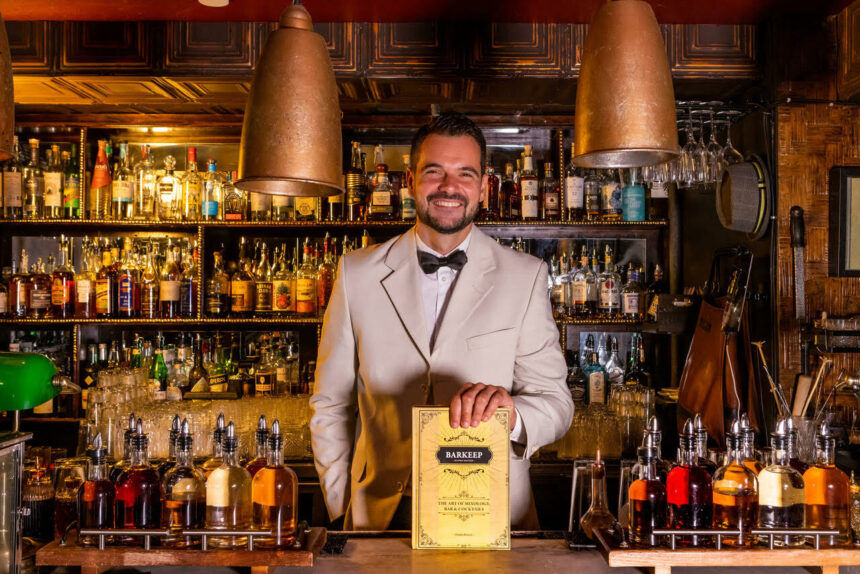There was a time not long ago when a bartender in Miami fit a very specific stereotype: former Northerner, disheveled, probably at least half-drunk, and quite likely still matted with beach sand from last night’s adventures.
But Miami saw a revolution behind the bar in the past generation as a new crop of cocktail makers took things far more seriously. We’re talking places like the Broken Shaker (whose Miami founders recently sold to Generator Hostels), The Regent Cocktail Club, Jaguar Sun and Lost Boy. (We’re probably not even mentioning your favorite because, hell, we’ve got a lot of really good bars in Miami now.)
If you strike up a conversation with your barkeep (highly recommended), you might catch wind of something new influencing mixology in Miami lately: an influx from overseas. Bartenders from Italy to Japan come for a pop-up or bar takeover and end up making a permanent move. We spoke to a few of the most influential bartenders around Miami to find out how this very welcome foreign invasion is shaking up the local cocktail scene.
You couldn’t talk about ‘Miami-style’ bartending previously, but now everybody knows it. It’s like a mix of everything that’s happening around the world.
Where he’s from: Born in Calimente, Cuba, in 1964, Cabrera grew up hearing stories about the bar his father owned before the revolution, a community gathering spot where factory workers would start the day with a coffee and a pastelito and come back that night for rum cocktails. After attending Cuba’s bartending school, Cabrera became a professor there himself.
His bartending style: Cabrera practices a bartending style that would feel at home in a Cuban cantina from the 1950s and has taught what he knows to many of Miami’s best bartenders—he figures at least 15 of them. “I mean, I’m really proud of that,” he says.
What he’s shaking: On the day we spoke, Cabrera was getting ready for a National Daiquiri Day with a spicy guava and an absinthe daiquiri.

Where he’s from: Bozovic grew up in Belgrade, Serbia, where the service industry is “taken very seriously.” He and a friend opened the Belgrade Bartending Academy in 2009 before moving to New York City and then Miami in 2016.
His bartending style: His five-year-old bar, Swizzle, is an amalgamation of Bozovic’s background. He takes the serious approach to service from Serbia, combines it with an omakase-like “non-standing bar” and then adds 150 rums to make it all feel more “Miami.”
What he’s shaking: The Serbian plum wine slivovitz lands in a cocktail with absinthe, bitters, fresh juice and egg white, with a frothy top and herbal essence. “What I’m trying to do with slivovitz is what the caipirinha did for cachaça back in the day.”

When people come together from all over, we have more to offer as a team. We have interesting stories to tell.
Where she’s from: Deyanova moved from Bulgaria to play college volleyball in, of all places, Arkansas. She started working as a bartender in New York in 2006 and joined The Setai in 2021. Growing up, Deyanova went to restaurants and bars only on birthdays or anniversaries. During college in Arkansas, she got a fake ID and had to learn how to order a drink. “It was wonderful and scary, but I loved it.”
Her bartending style: Going out to dinner once or twice a year as a kid meant every time felt special, something Deyanova likes to impart to her customers now. She’s also been that shy customer sidling up to a bar for the first time, so she goes easy on newcomers.
What she’s shaking: “I love making something I’ve never experienced. So yes, come in and ask for that thing you think nobody knows.”

Italians are very colorful and have a lot of emotion.
Where he’s from: Sardi grew up in the tiny northern Italian town of Mazzè before moving to Miami at 14. He worked at bars in New York City before coming to Amara in ‘21. Back in Italy, bars served as community meeting places, where kids would hang out after school next to the adults stopping in for a post-work aperitivo.
His bartending style: “Italians are very colorful and have a lot of emotion and like to connect with one another. And it definitely helped my skills behind the bar,” Sardi says. Amara has many regulars from the Edgewater neighborhood who think of the place “as their living room,” so Sardi’s goal is to make them feel at home.
What he’s shaking: The margaritas at Amara are made with juices pressed daily, most notably in the classic: tequila, lime and agave. Like the newcomers often behind bars in Miami, the margarita is a drink that’s not from here but still feels like it belongs. “There’s nothing to dilute the great tequila we use. We shake the hell out of it and add a little salt. That’s it.”










